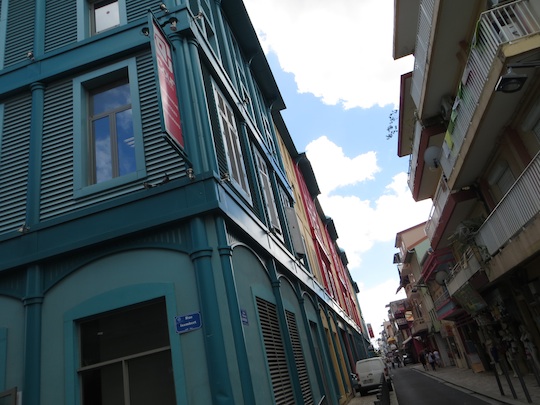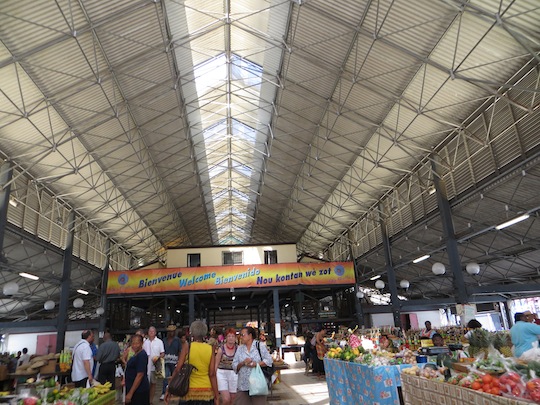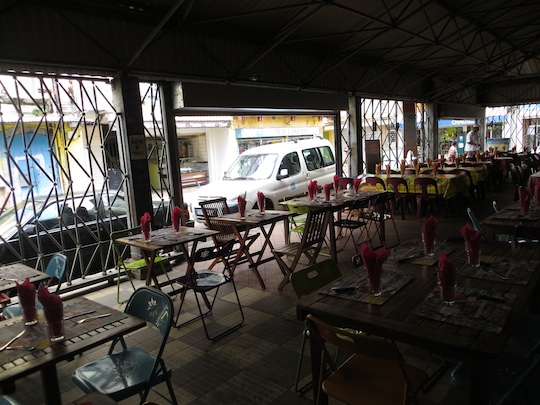Above: the Marche D’Epice in Fort de France (All photos by CJ)
By Alexander Britell
FORT-DE-FRANCE — WALKING THE bustling streets of Martinique’s Fort de France, it’s often hard to remember one is in the Caribbean.
From the aromas of freshly-baked baguettes to the constant hum of French, Fort de France is a Caribbean doppelganger for Nice.
This city of just over 90,000 is full of quiet, narrow streets and the kinds of charming, European-style corners you’ll find in few cities in the region.
Above: Fort de France
And at its centre is the soaring, metallic grand marché, which was designed by architect Henri Pick and opened in 1901 on Rue Isambert.
Above: the Grand Marche
And tucked into the far end of the capital’s signature spice market is one of the city’s culinary gems.
Here, hidden among a gathering of folding chairs just off a side street, is the home of quintessential creole cuisine.
It may look like a makeshift, no frills kitchen, but the food is the work of a master.
It’s called Chez Carole, a traditional creole outpost that has become a culinary institution in Martinique’s capital.
Above: Chez Carole
Martinique native Carole Michel has helmed the eatery for more than 13 years, producing delectable accras de morue (cod fritters) and, particularly, a nearly perfect planteur — Martinique’s answer to the rum punch (though not to be confused with the “Ti Punch,” Martinique’s answer to the Daiquiri.)
But the true star is the lambi (French for conch).
It’s prepared in the traditional creole style — zesty, tangy and fresh.
And as you experience its exotic flavours, robust, but not overpowering, it’s enough to remind you of precisely where you are — one of the Caribbean’s great capitals.



